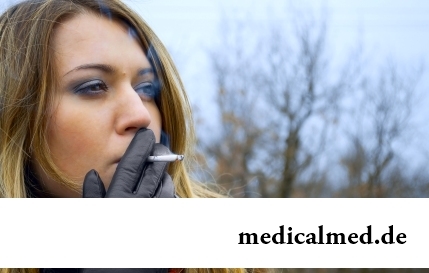





Nevus
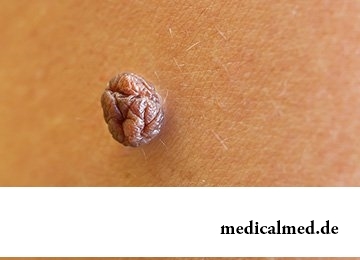 The nevus (birthmark, birthmark) is the high-quality skin education representing accumulation of novotsit which contain a pigment melanin in a large number. The word came from Latin "naevus" that is translated as "birthmark".
The nevus (birthmark, birthmark) is the high-quality skin education representing accumulation of novotsit which contain a pigment melanin in a large number. The word came from Latin "naevus" that is translated as "birthmark".
There are many different types of birthmarks among which is inborn (are noticeable from the first days of life of the baby) and acquired (appear later). Classification of these educations is extensive. Let's stop on three widespread types of a nevus: vnutridermalny, papillomatous and dysplastic though actually them it is much bigger.
Vnutridermalny nevus
This kind of birthmarks, as a rule, inborn also does not turn into a malignant new growth, that is is melanomoneopasny. According to histologic data the vnutridermalny nevus can give rise to primary melanoma extremely seldom.
The exact reason of emergence of this type of birthmarks is still unknown, however, there is a hypothesis according to which they are result of genetic disorders.
Vnutridermalny educations have a dome-shaped or warty appearance, are sometimes located on "leg" and in a form remind blackberry. Their color can vary from light shades brown to completely black. Size, as a rule, no more than several centimeters.
The Vnutridermalny nevus happens single or multiple and is located most often on a face or a neck, in rare instances appearing on some other sites of skin. In process of growth of a body education also increases in sizes.
From possible complications, except risk of regeneration of a birthmark in a melanoma, there is a risk of its mutirovaniye in a papillomatous nevus. As a result of it on it there are many roughnesses, cracks and folds in which pathogens and the died-off cells accumulate that is fraught with development of infectious process.
Papillomatous nevus
This high-quality education which acts over skin and resembles papilloma superficially. In most cases the papillomatous nevus is located in a pilar part of the head and can be both inborn, and acquired. As the risk of transformation in a melanoma is extremely small, this type of birthmarks belongs to melanomoneopasny.
Genetic features of the person are the reason of education owing to what there is accumulation of pigment cells in one place.
The papillomatous nevus has a hilly surface and uneven outlines, towers over the level of an integument and can be covered with hairs. Its color brown or brown, and sometimes it does not differ from healthy skin. Education happens multiple or single and is capable to reach very big sizes.
Dysplastic melanotsitarny nevus
The dysplastic nevus which is often called by an atypical birthmark is a predecessor of a malignant tumor – melanomas. Frequency of its detection is identical to representatives of both floors. Appearing in 12-15 years, birthmarks continue to act on a body till an extreme old age, leading to formation of new spots.
Individual perception of UV rays, gender and age of the person do not exert any impact on emergence of a dysplastic melanotsitarny nevus. Such educations are inherited on the autoimmune channel, and at excessive influence of artificial ultraviolet or sunshine they regenerate in a melanoma. The risk of transformation of a high-quality dysplastic nevus in a malignant tumor at persons who accept immunodepressants is high.
Typical sign of education is its dual structure. The Melanotsitarny nevus has an appearance of a roundish spot with the central part raised over skin. Color scale is various: from red-pink to black-brown. The size of birthmarks reaches 5 mm, at the same time their border indistinct.
Education, as a rule, multiple that allows to speak about a syndrome of a dysplastic nevus. In most cases spots are located on body parts which are closed from sunshine – a pilar part of the head, a back, the lower extremities, a thorax, buttocks and genitals. Very seldom melanotsitarny nevus appears on a face.
Treatment of a nevus
The medicine and cosmetology offer several ways of removal of different types of birthmarks.
The most available and popular method of treatment of a nevus – a resection a usual surgical scalpel. However this operation has both pluses, and minuses. The main shortcoming is a probability of emergence of hems and scars. Besides the procedure is quite painful therefore it demands use of local anesthesia or the general anesthesia. However in some cases, for example, at a malignant dysplastic nevus, such treatment is most effective, and sometimes is unique.
One more way of removal of birthmarks is a cryotherapy. At this method of treatment the nevus is affected by such coolants as artificial ice or liquid nitrogen. Under the influence of the low temperature of a nevotsita are frozen and perish.
 Way of disposal opposite to cryotreatment for birthmarks – electrothermic coagulation which consists in cauterization of pigment cells. Operation is painful and is carried out under anesthetic. The main advantage of electrothermic coagulation is that it is almost bloodless.
Way of disposal opposite to cryotreatment for birthmarks – electrothermic coagulation which consists in cauterization of pigment cells. Operation is painful and is carried out under anesthetic. The main advantage of electrothermic coagulation is that it is almost bloodless.
There are also less traumatic methods of treatment of a nevus, for example, laser removal which pluses are obvious: operation is painless, does not demand an anesthesia, is expedited and does not leave scars or hems.
Perspective cosmetology way is pointed radiation, but if there is a risk of regeneration of a birthmark in a melanoma, it cannot be used.
It is quite simple to prevent transition of usual defect of skin to a dangerous disease. For this purpose it is necessary to treat responsibly health and a condition of own skin, especially in places of localization of birthmarks, and also to observe preventive measures.
To tell even the shortest and simple words, we involve 72 muscles.

Extracorporal fertilization – one of the most modern methods of controlling with infertility. So far it already helped znach...
Section: Articles about health
Maternal milk is the best food for the newborn. It is the unique natural product containing an optimum set of nutrients, and which is best adapted in order that the baby normally developed and it was protected from harmful fa...
Section: Articles about health
Each failure in work of bodies and systems of a human body is, as a rule, shown by the whole complex of symptoms. In particular, malfunctions with health often cause emergence of cosmetic defects in the form of rashes on a face. Experienced doctors know that localization of heat-spots usually depends on what disease the patient has....
Section: Articles about health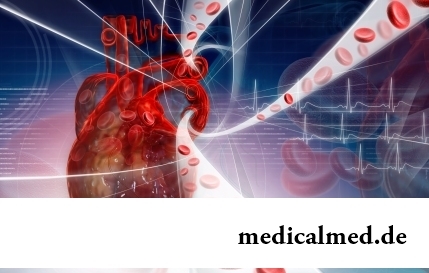
The state of health of the person in many respects depends on chemical composition of biological liquids of an organism. Specialists consider that з...
Section: Articles about health
The majority of gynecologic diseases prove three main signs, each of which speaks about need of a visit to the gynecologist. Certainly, it is possible to establish the exact diagnosis only after inspection, but on the basis of some signs it is possible пр...
Section: Articles about health
Modern footwear is extremely various. It stopped being only protection for legs long ago. Today shoes, boots, barefoot persons choose not so much proceeding from their convenience and functionality how many being guided by outward, brand and an opportunity to add with them a stylish dress. At the same time, buying footwear, think of its safety a little. Meanwhile, many popular models can do essential harm to health....
Section: Articles about health
Energy saving lamps are one of the most popular products of innovative technologies, and there is no wonder: they much эк...
Section: Articles about health
The technique of acupuncture (acupuncture) is used in the medical purposes more than three and a half millennia. It is eurysynusic and recognized as official medicine in the majority of the developed countries of the world. Influence by fine needles on so-called points...
Section: Articles about health
The cosmetics intended for improvement of a condition of skin, nails and hair are used by each woman. Expenses on regular acquisition of the fashionable widely advertized products of well-known companies for many become very notable and significantly burden the family budget. Meanwhile, there is a number of inexpensive pharmaceutical drugs which can quite be applied in the cosmetic purposes. At the same time the effect of their use is often more noticeable, than result of use of the most expensive...
Section: Articles about health
No, probably, the person who would not have cold. Cold, cough, a headache – these symptoms are known to everyone. Peak to Prost...
Section: Articles about health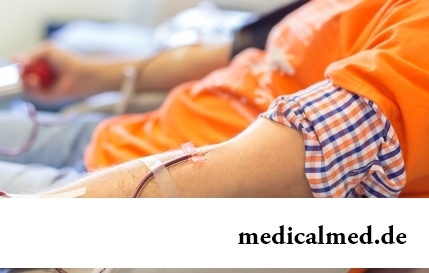
Transfusion of donor blood has almost century history. In spite of the fact that this procedure is quite usual for many people, process of blood donation is still surrounded with numerous myths. Today we aimed to discredit the most widespread of them....
Section: Articles about health
The advantage of swimming for the person is so high that this sport is not only the most popular, but also is widely applied in medicine and rehabilitation processes. If you look for for yourself the occupation allowing pleasantly and to spend time, then swimming with advantage – the fact that it is necessary for you. And give learns several facts about swimming....
Section: Slideshow
Sugar - the digestible refined product which is not of special value for an organism of the modern person. Use...
Section: Articles about health
The stroke is one of the most widespread diseases of the person, annually in the world about 6 million cases of this pathology are registered. According to medical statistics, strokes occur almost three times more often than myocardial infarctions. Disease otno...
Section: Articles about health
All got used long ago that, having addressed the plastic surgeon, it is possible to modify natural parameters of a figure or to minimize the damages put to appearance with ruthless time. Many people (preferential women) worldwide annually decide on operations such. However there are also much more exotic interventions which are carried out seldom so far and cost expensive very much. We bring the story about the most unusual of them to your attention....
Section: Articles about health
The summer of this year in Russia was very ambiguous. Regions suffered from a merciless heat, from pouring rains, from times...
Section: Articles about health
White teeth and the Hollywood smile – a dream of many people. Long time was considered that the plaque on teeth and change of their color – destiny of those who incorrectly eat smokes and badly brushes teeth. But the paradox is available: at everything the variety of toothpastes existing today...
Section: Articles about health
We live during an advertizing era. Daily each person receives a solid portion of persuasive councils about what to eat to be healthy and successful. Products about which we will talk today are combined by the following circumstance: all of them are positioned as the most useful and the most suitable for inclusion in a morning meal. Unfortunately, it is not true: these 10 products do not suit for breakfasts at all....
Section: Articles about health
So, you resolved to lose weight. And now you try to understand what to begin with: from exercise stresses or a diet? And how to make, h...
Section: Slideshow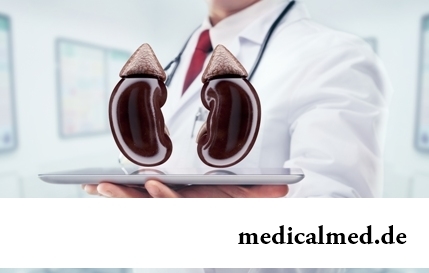
Kidneys perform the most important function of clarification of blood from those products of metabolic processes which cannot be used by an organism for obtaining energy and construction of new cells. With the urine produced by kidneys from a body of the person bulk is removed...
Section: Articles about health
For the city dweller the fitness is the most convenient sport. It is enough to acquire the subscription to the gym to get access to various apparatuses and an opportunity to train under the leadership of the experienced consultant. Many consider fitness the best way of maintenance of physical shape and receiving dynamic loads which the people occupied preferential with brainwork so need. Nevertheless, representations of most of consumers of similar services about специф...
Section: Articles about health
A lot of things depend on a condition of a backbone in a human body, a backbone - not only a support for a body, it also contain...
Section: Articles about health
The climax, or menopause is the normal process of the termination of genital function of the woman which is followed by serious hormonal changes in an organism. Usually the menopause begins at the age of 50-55 years, but characteristics of this process are very individual. T...
Section: Articles about health
Such trouble as the milkwoman's attack, at least once in life happened almost to each woman. Prevalence of a disease is explained by the fact that the causative agent of an illness belongs to the so-called opportunistic microflora living on mucous membranes of any human body and which is becoming more active only under favorable conditions. If you had curdled allocations from a vagina, the itch and burning in external genitals, or painful feelings disturb at sex...
Section: Articles about health
Statistically, at the address to doctors seven of each ten patients complain of a headache. Actually people, periodically...
Section: Articles about health
Life of the modern child is extremely active and difficult. Information strain which is experienced by the school student and did not dream pupils of last times. Careful parents, wishing well to the children, will organize a set of additional classes in circles, sports...
Section: Articles about health
Practically each person is familiar with the annoying, pulling, unscrewing pains caused by overcooling of muscles of a back. In certain cases inflammatory process is not limited to discomfort, being followed by emergence of hypostasis, consolidations, temperature increase. At the wrong treatment the acute miositis can lead to a chronic disease or aggravation of other pathologies of a back (vertebral hernia, osteochondrosis) therefore it is important to pay attention to symptoms of an illness in time and to start to...
Section: Articles about health
